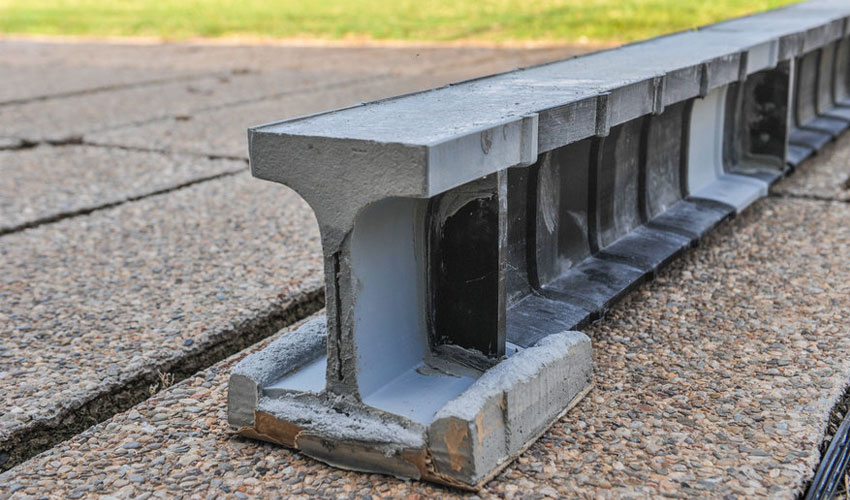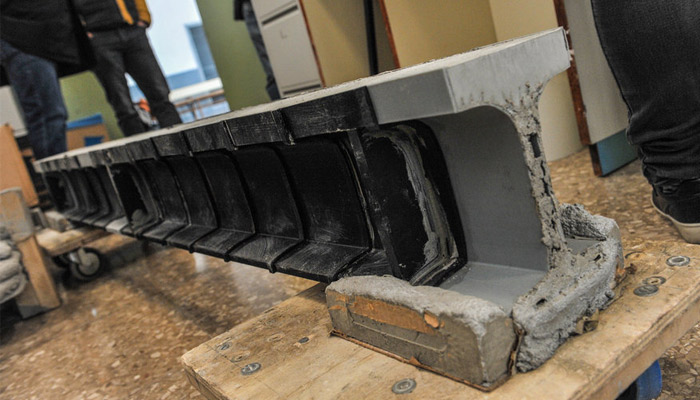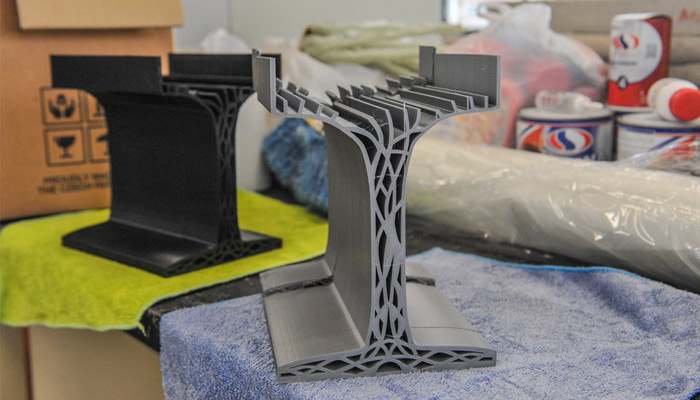3D Printed Beams Made From Recycled Plastic Replace Reinforced Concrete

A team from the Polytechnic University of Valencia (UPV) has developed an alternative to the reinforced concrete beams used in the construction sector. By using additive manufacturing, they have designed beams made of recycled plastic. The result is a drastic reduction in weight, since they weigh 80% less than current solutions, making it considerably easier to transport them and reduce the energy required to assemble them. The various 3D printed components forming the beam can be assembled as easily as LEGO bricks.
Very popular in the construction sector, reinforced concrete is, as its name indicates, composed of concrete and metal, most often steel. It is therefore a composite material that can resist traction and compression and is capable of supporting significant loads. However, it is a material that remains heavy to transport as the presence of steel increases considerably the weight of the beam. Researchers have therefore tried to reduce this constraint as much as possible and have worked for 3 years on a 3D printing project. José Ramón Albiol, professor at the UPV’s Technical School of Building Engineering (ETSIE), adds: “Our goal was to propose an alternative to the current reinforced concrete beams. These are made using profiles built for the length of the piece, which requires expensive installation and are hard to transport.”

The different 3D printed blocks fit together like LEGO (photo credits: UPV)
3D printed beams inspired by human bone
The researchers remain rather discreet about the 3D printing process used; we only know that they preferred recycled plastic to reduce the ecological footprint, and that they were inspired by the shape of the bone to design their 3D models. The objective was to reproduce the structure of the epiphysis, the end part of the bones: it is made of several layers that give a significant rigidity while remaining quite light. Using additive manufacturing, the researchers were able to mimic this alveolar structure and putting material where it was needed.
The result is a reduction in total weight thanks to the use of plastic instead of steel, but also thanks to a better distribution of the material. José Ramón Albiol continues: “It is an alveolar structure, which makes it possible to decrease the amount of plastic used – and therefore its weight – while maintaining structural rigidity. This is what we have transferred to these revolutionary beams, specifically to their profiles. It is a very intelligent natural system and its reproduction in these beams awards them, with the low structural weight, very high mechanical capabilities.”
In concrete terms, the researchers 3D printed blocks that can fit together like LEGO bricks. A layer of concrete is then added to form the final beam. Beyond the reduced weight, this method allows for a structure that can be modulated according to the needs and the construction project. The blocks are more easily transportable, with installation done on site, simplifying the associated labor.

The lattice structure reduces the total weight of the beam
Miguel Sánchez, from the UPV’s Department of Systems and Computer Science (DISCA), concludes, “To be able to customise the beams in situ makes it possible to adapt the characteristics of each of them to the structural needs at each point of construction. The possibility to recycle polymeric materials to produce the beams significantly decreases their carbon footprint.”
What do you think of these 3D printed beams? Let us know in a comment below or on our Facebook, Twitter and LinkedIn pages! Sign up for our free weekly Newsletter here, the latest 3D printing news straight to your inbox!






